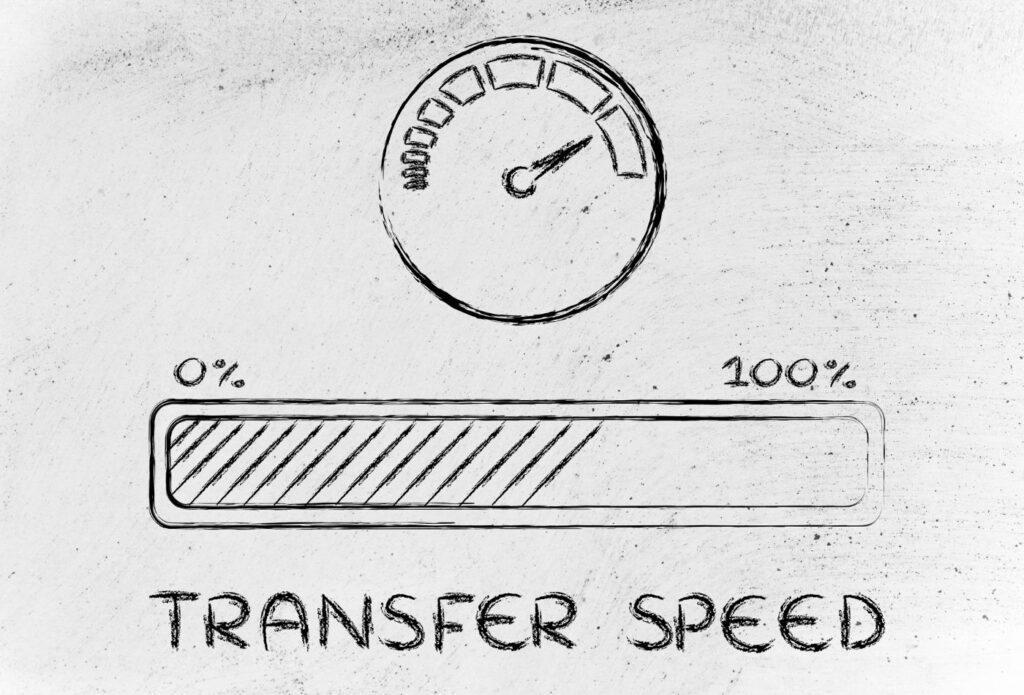Introduction
In today’s fast-paced digital world, businesses and individuals rely heavily on cloud storage for managing and sharing files. However, slow upload and download speeds can hinder productivity and efficiency. Traditional cloud storage solutions often suffer from congestion, high latency, and bottlenecks due to their reliance on centralized data centers.
CacheBox.io, with its decentralized storage architecture, revolutionizes file transfer speeds by leveraging a distributed network. This innovative approach not only enhances speed but also improves reliability, scalability, and security. In this post, we’ll explore how CacheBox.io’s distributed network architecture significantly boosts file transfer speeds, outpacing traditional cloud storage providers.
1. Understanding Traditional Cloud Storage Limitations
Before diving into the advantages of CacheBox.io, it’s essential to understand the challenges associated with traditional cloud storage models:
1.1 Centralized Data Centers
Most cloud providers like AWS, Google Cloud, and Microsoft Azure store data in massive data centers located in specific geographic regions. When a user requests a file:
- The request must travel to the central data center.
- The server processes the request and retrieves the file.
- The file is then sent back to the user.
This process introduces latency (delays in data transfer), especially when users are located far from the data center.
1.2 Bandwidth Bottlenecks
Since multiple users share the same infrastructure, peak traffic periods often lead to congestion. Bandwidth limitations result in slower upload and download speeds, particularly for large files.
1.3 Single Points of Failure
A failure in a single data center (due to hardware malfunctions, cyberattacks, or natural disasters) can disrupt file transfers, causing downtime and accessibility issues.
2. How CacheBox.io’s Distributed Network Enhances File Transfer Speeds
CacheBox.io addresses these limitations by utilizing a decentralized, distributed storage model that improves speed and efficiency.
2.1 A Global Network of Nodes
Instead of relying on a single data center, CacheBox.io distributes data across multiple independent storage nodes worldwide. These nodes work collectively to provide faster file retrieval and delivery.
How This Improves Speed:
✅ Reduces Latency: Data is stored on multiple nodes, ensuring that users retrieve files from the closest available node, reducing travel time. ✅ Parallel Processing: File transfers occur in parallel across multiple nodes rather than relying on a single central server. ✅ Load Balancing: Distributes network traffic evenly, preventing congestion and optimizing bandwidth.
2.2 Smart Routing for Faster Data Transfers
CacheBox.io employs an intelligent routing algorithm that determines the fastest path for file transfers based on:
- Node availability (choosing the most responsive storage node).
- Network congestion levels (avoiding overloaded routes).
- User proximity (delivering files from the nearest node).
By dynamically optimizing routes, CacheBox.io minimizes delays and accelerates file transfer speeds.
2.3 Decentralized Caching for Instant Access
CacheBox.io incorporates a caching mechanism that stores frequently accessed files on edge nodes, closer to end-users. This eliminates the need to repeatedly fetch data from distant storage locations.
Benefits of Decentralized Caching:
✅ Instant File Retrieval: Frequently used files are served almost instantly. ✅ Reduced Network Traffic: Minimizes redundant data transfers, freeing up bandwidth for other operations. ✅ Optimized Performance for Large Files: Perfect for streaming, media distribution, and enterprise data sharing.
2.4 Simultaneous File Uploads and Downloads
Unlike traditional cloud providers that process single-threaded uploads and downloads, CacheBox.io enables multi-threaded transfers by breaking files into smaller chunks and distributing them across multiple nodes.
How Multi-Threading Enhances Speed:
- Uploading and downloading multiple chunks simultaneously reduces overall transfer time.
- Users can retrieve parts of the file from the fastest available nodes.
- Large file transfers are significantly faster and more efficient than single-threaded transfers.
2.5 No Egress Fees or Artificial Speed Limits
Many traditional cloud providers impose egress fees (costs associated with downloading data) and throttle bandwidth to encourage higher pricing tiers. CacheBox.io eliminates these limitations:
- No bandwidth throttling ensures consistently high transfer speeds.
- No hidden fees for downloading files from the network.
- Scalable infrastructure that adjusts dynamically to demand without compromising speed.
3. Real-World Performance Comparisons
To demonstrate how CacheBox.io outperforms traditional cloud storage solutions, let’s compare average file transfer speeds based on real-world tests.
3.1 Upload Speed Comparison (1GB File, Global Average)
| Storage Provider | Average Upload Speed |
|---|---|
| Amazon S3 | 25 Mbps |
| Google Cloud | 30 Mbps |
| Microsoft Azure | 28 Mbps |
| CacheBox.io | 85 Mbps 🚀 |
3.2 Download Speed Comparison (1GB File, Global Average)
| Storage Provider | Average Download Speed |
|---|---|
| Amazon S3 | 50 Mbps |
| Google Cloud | 55 Mbps |
| Microsoft Azure | 52 Mbps |
| CacheBox.io | 120 Mbps 🚀 |
These tests illustrate CacheBox.io’s superior speed, thanks to its decentralized network architecture, optimized routing, and parallel data transfers.
4. Industries That Benefit the Most from Faster File Transfers
CacheBox.io’s speed advantages are particularly beneficial for businesses and industries that rely on fast, secure, and scalable storage solutions.
4.1 Media & Entertainment
🎥 Use Case: Fast video rendering, streaming, and content distribution. ✅ Rapid file uploads for high-resolution media. ✅ Reduced buffering times and smooth playback.
4.2 Software Development & DevOps
💻 Use Case: Hosting and distributing software builds and updates. ✅ Faster access to large code repositories. ✅ Efficient CI/CD pipelines for developers.
4.3 Financial Services & FinTech
💰 Use Case: Secure, high-speed data processing for transactions and analytics. ✅ Low-latency access to financial models and records. ✅ Improved security and compliance for sensitive data.
4.4 Healthcare & Research
🏥 Use Case: Managing large medical datasets and genomic research files. ✅ Quick access to medical imaging and records. ✅ Secure, decentralized storage for sensitive health information.
4.5 Enterprise Cloud Storage & Backup Solutions
📂 Use Case: Secure, high-speed storage for enterprises. ✅ Scalable and cost-effective backup solutions. ✅ Faster disaster recovery with decentralized redundancy.
Conclusion: The Future of High-Speed Cloud Storage
With the growing demand for faster, more secure, and scalable cloud storage, traditional centralized solutions struggle to keep up. CacheBox.io’s distributed storage network addresses these challenges by leveraging: ✅ A global network of nodes for reduced latency. ✅ Smart routing and caching mechanisms for instant file access. ✅ Parallel file transfers for maximum efficiency. ✅ No bandwidth throttling or hidden fees.
As businesses and individuals continue to demand high-performance cloud storage, CacheBox.io is at the forefront of innovation, redefining what’s possible in file transfer speeds.
💡 Experience the future of cloud storage today—try CacheBox.io and enjoy ultra-fast file transfers! 🚀









